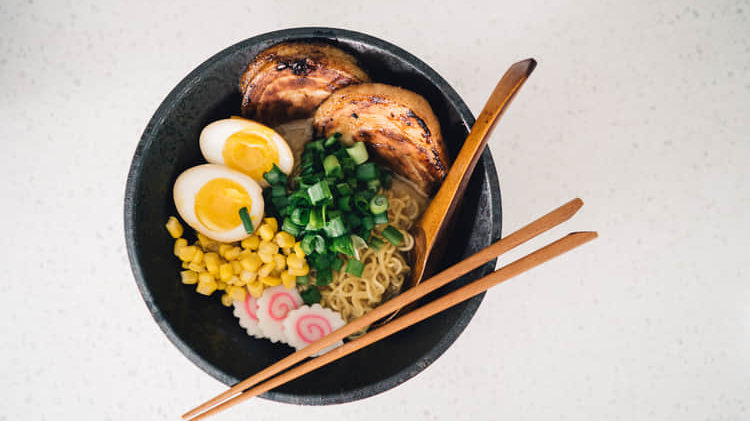Korean ramyeon is a must-have in every Korean household, or every time someone visits Korea. It is basically the Korean version of instant Japanese ramen. It is always instant, with packaged instant noodles. It is very delicious yet simple to make. You can add any ingredients that you like while the evil version of it is to add cheese.
As compared to Japanese ramen, which take some time to prepare the broth and all, Korean ramyeon is more suitable to have during supper times as it can be done within 30 minutes. The essence of cooking ramyeon is the timing, as the curly noodles will continue to cook in the hot soup. If it is overcooked, it will become mushy before you finish it.
Korean ramyeon can be topped with basically anything such as cheese, sausage, ham, vegetables, onions, mushrooms, kimchi, or any other food that you can think of or desire. After finishing the ramyeon, rice can be added into the pot to make another Korean dish called gukbap, which is a type of rice soup.
A Korean tin pot is usually used for cooking or serving Korean ramyeon. This is because it is light, the sides are thin, heat up quickly and fits 1 pack of Korean ramyeon perfectly. Like those in Korean dramas, they will utilise the lid of the pot by taking some noodles and put on it to cool down the noodles before eating them. This tin pot is not necessary to cook ramyeon, it is just to experience the Korean culture.
Ingredients:
- 1 package of Korean ramyeon
- 2½ cups water
- 1 egg
- 2 green onions, chopped
- A slice of cheese (optional)
- Rice (optional)
Directions:
- Boil water in the pot using high heat.
- Add the soup powder into the boiling water.
- Add in the ramyeon noodles.
- Cover the pot and continue to boil for 1 minute.
- Open the lid and slightly stir the ramyeon.
- Crack an egg into the middle of the pot. Cover and boil for 2 minutes.
- If you want a poached egg, don’t stir. If you want scrambled egg, then stir.
- Turn off the heat.
- Add in green onions and the dried vegetables in the packaging.
- You can also add in cheese for a creamier broth.
- Kimchi can be served together.
- If you have leftover rice, you can add it into the broth after finishing the noodles to make gukbap.
